Measuring energy usage is my new obsession
posted by Jeff | Friday, May 31, 2019, 3:25 PM | comments: 0One of the cool things about the installation of the Powerwall last week is that we now have total energy monitoring. The solar by itself includes aggregate reporting about generation, but without matching it against actual usage, the overall story about how and when we use energy is not complete. At best, I have the electric bill that shows how much we pulled from the grid, and how much we put into it. That isn't that interesting at the macro view of a month.
So a little about what the installation changed. The Powerwall is just a big, 14kWh battery. You can use it in two ways: Either to back up the house when the power goes out, or to shift power generated during the day to power the house at night. If the difference between your generation and usage is the amount of the battery capacity, then the latter scenario makes sense. But we don't have the generation or storage capacity to cover it, so it doesn't make any difference if we net-meter our excess day power back into the grid and pull at night. Not only that, but in the case of power outages, you can't keep the lights on if the battery is just time shifting the power for you. I like to keep "exercising" it, so I let it discharge down to 90% during the day instead of keeping it topped off at all times.
The key ingredient here is that the ancillary battery hardware includes the gateway, which will disconnect the system from the grid in an outage. You don't automatically get that with a solar system, but you need it because during an outage, you don't want to be feeding power back into the grid and electrocute a line worker who doesn't expect power there. We also had to shuffle our loads around, because the whole house can't be powered off of the battery, which has a maximum output of 7 kWh. The house was wired with two 150a panels, plus one of the two heat pumps (no idea why it isn't both) feed directly from the main box. So inside, they grouped all of the big stuff, the oven, range, AC, car charger, water heater into one, and everything else, including the fridge into the other. The "other" is what gets backed up. It collectively uses around 300W for the most part, meaning it could last almost two days without sun. During the day, there will be so much excess power that I can invite a neighbor to plug in some fans or something. So yeah, we'll have no air conditioning in an extended outage, but the alcohol will be cold and we'll have ice forever.
The battery came online at a time when we're in the middle of crazy hot, dry weather. We normally top out at 92 during the middle of summer, and only briefly because of daily afternoon thunderstorms (it's even cooler on the coasts). For whatever reason, we're into the second straight week of hitting 100 with no rain in sight. We're in our worst-case scenario for energy usage. Just last month we only took about 350kWh from the grid (around fifty bucks). It'll be way higher now.
You can stare at the app all day to see how you're doing on an instantaneous basis:
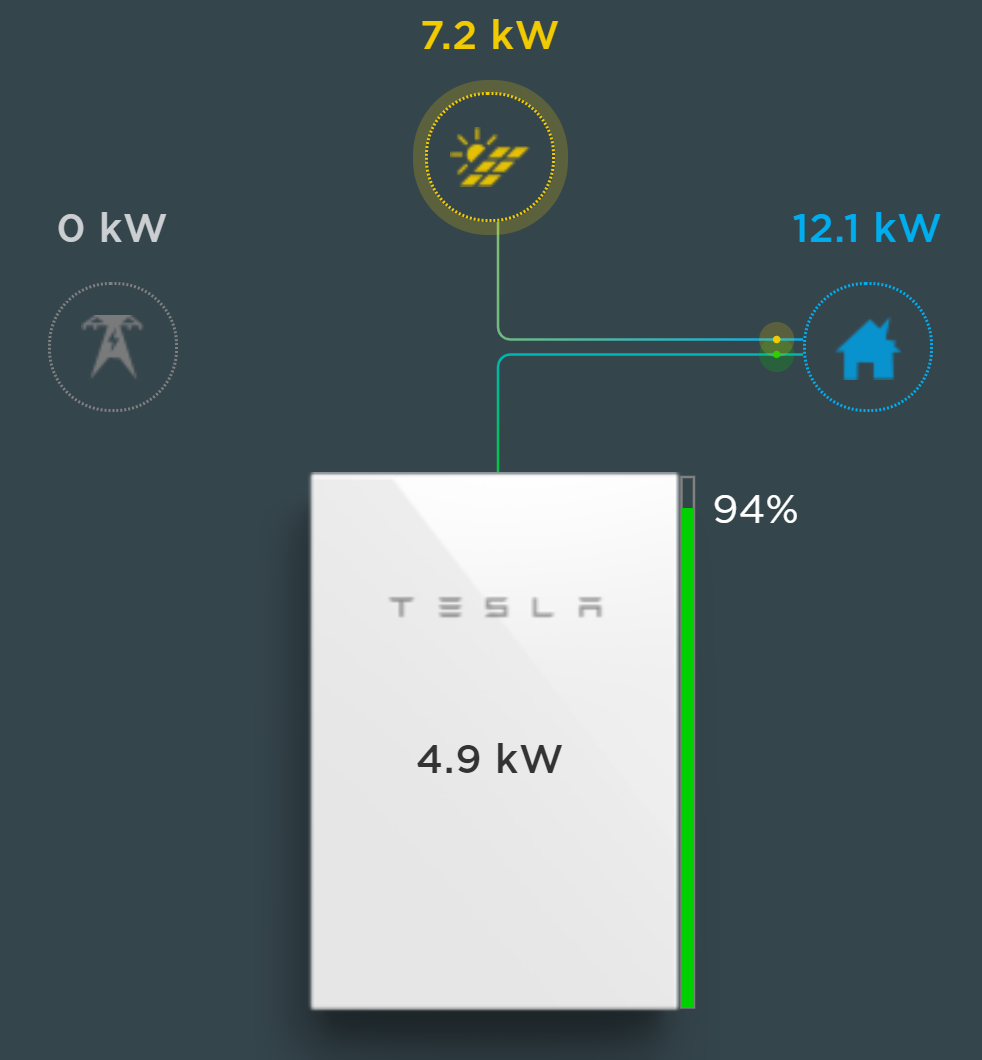
Here we are using solar and the battery to power the house.
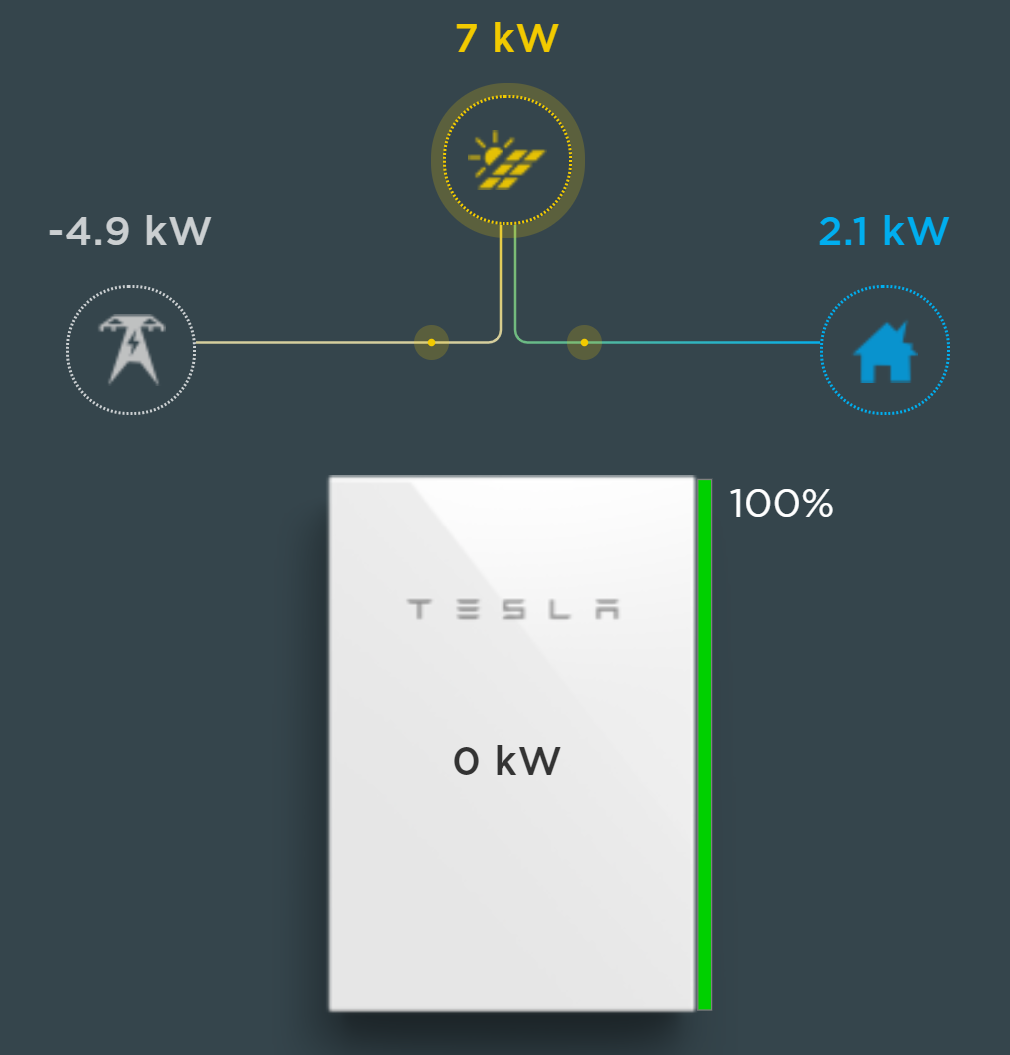
Here's the ideal: generating so much power that much of it is feeding back to the grid.
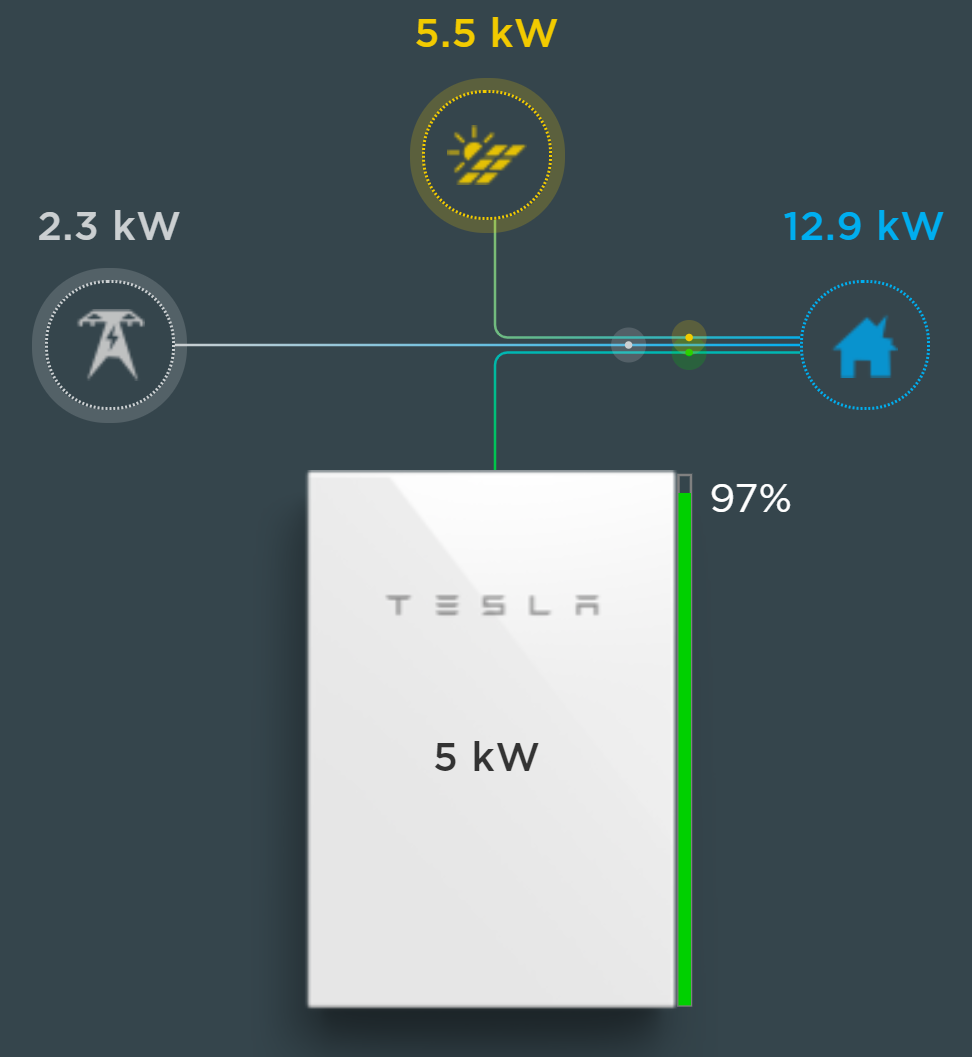
Here we are sucking power from all three sources.
Also revealing is the overall draw pattern on a particularly hot day:
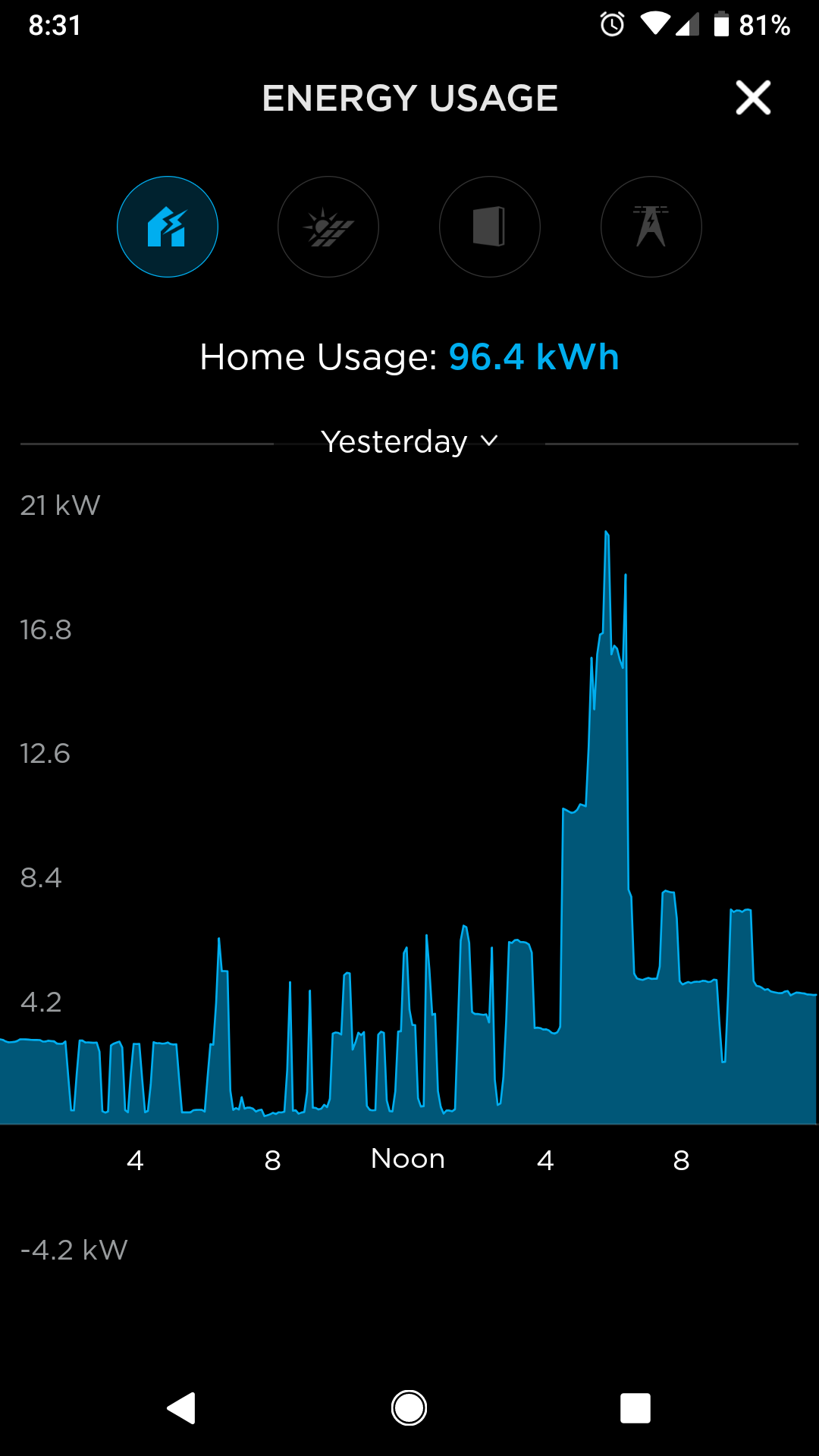
Overall consumption
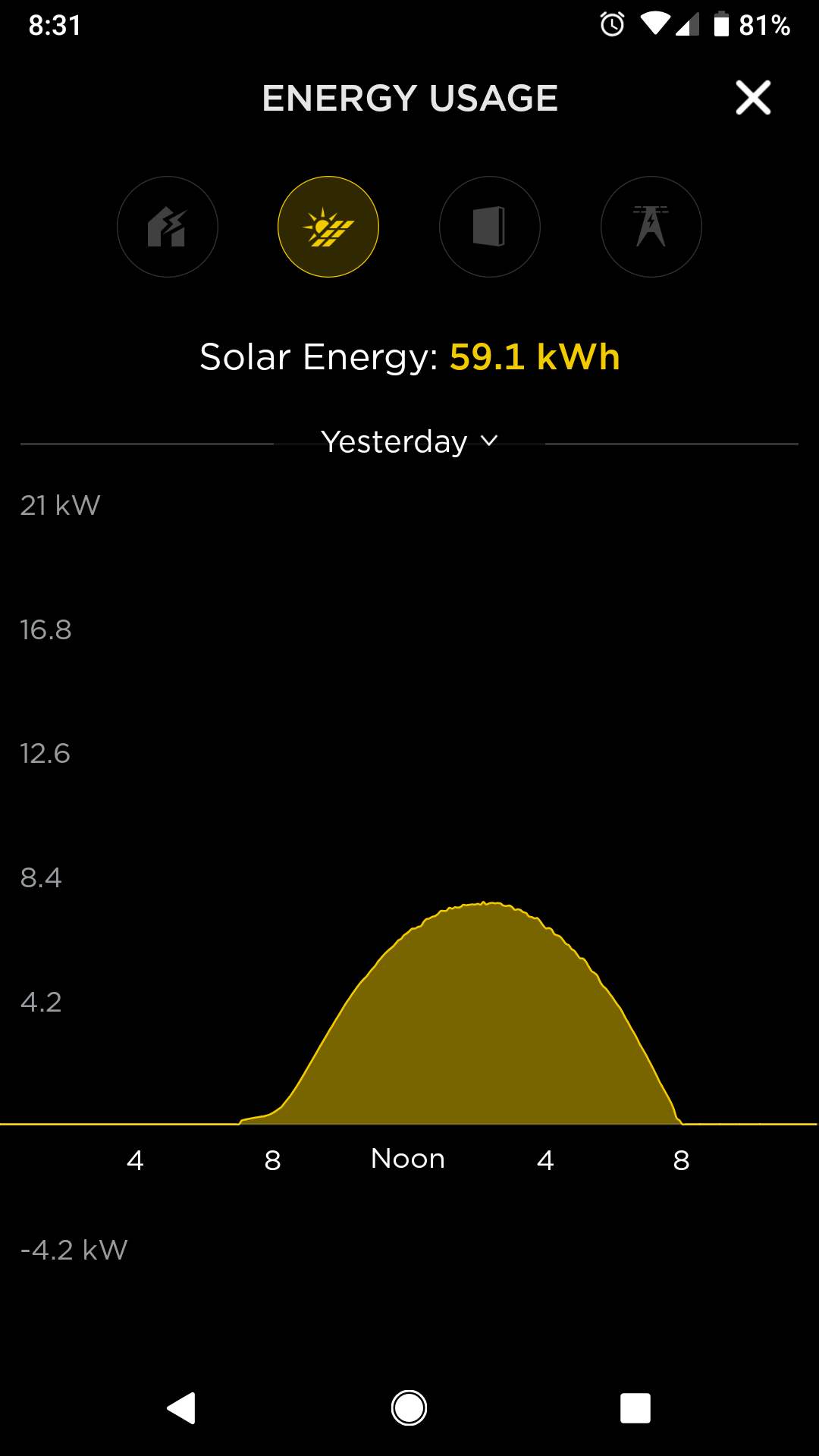
Solar generation
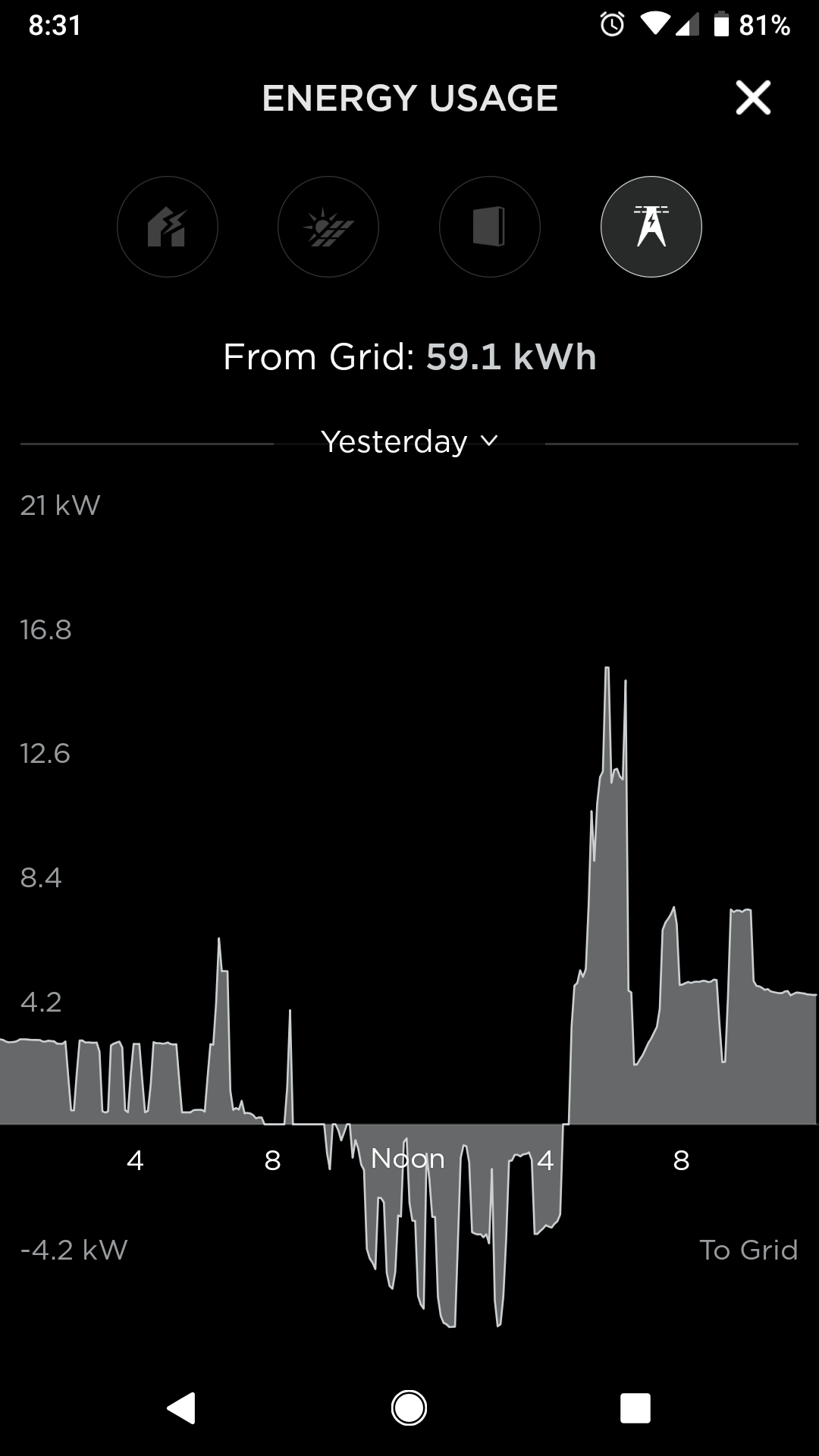
Grid draw
There are all kinds of things you learn about this data:
- Our peak usage borders on an extraordinary 100kWh per day (I've seen 103) when it's this hot. Our cars account for 10kWh in a round trip to work downtown (about 44 miles round-trip, at a cost of about $1.25). For reference, I think our lowest daily usage is around 45kWh per day in March/April, including a commute trip.
- We keep the AC down to 72 overnight, and it runs a lot. You can see at 7 we let it go up to 75, but cooking breakfast causes a usage spike. If the weather were any hotter, we couldn't keep it cool. Nest says upstairs has been running as much as 17 hour a day, downstairs 6.
- When I get home on days I commute, I plug in the car, we start using the oven or range, the sun starts heating up the house so the air comes on. That's an extraordinary draw.
- Solar generation isn't bad for a 10kW system, though it could be higher if they hadn't provisioned a 5kW inverter for the 6.1kW segment of the system. Our daily record is 61.8kWh, set in April. I'm not sure we have enough roof to add more in an effective way (the attic, sewer and bathroom vent placement is the real problem). This is why I feel strongly about the potential in distributed generation.
- I'm surprised at how much power electric appliances use.
- Getting to net-zero on a yearly basis here would probably require about 14kW of solar, with two electric cars. The difference in usage from spring to summer is extraordinary.
- As we close in on a year of data, it's pretty clear that our ROI period for the solar will be about 9 years, give or take a few months, and assuming no increases in utility cost. That's a pretty good return, and it's money baked into the value of the house (but not it's tax-assessable value) regardless.
- There are plenty of anecdotes in the forums I watch where people in cooler climates have no problem reaching net-zero for electricity, which surprises me because I thought that would be the exclusive domain of sunny places. The More You Know.™
We live in the future. Residential storage was not even practical a few years ago, and solar ROI used to take 20 years.
Comments
No comments yet.